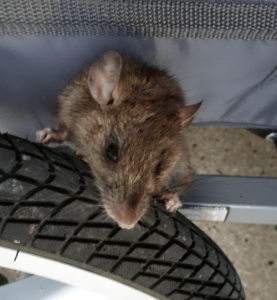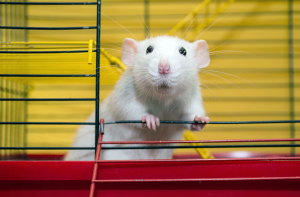What Should I Do if I Find an Orphaned or Abandoned Rat?
 If you find a young or baby rat that has been abandoned by its mother, then there are ways you can raise the rat on your own. If you decide that you want to keep the rat, the first determination that you will have to make is the age of the baby rat. This will help you understand how to feed and care for it.
If you find a young or baby rat that has been abandoned by its mother, then there are ways you can raise the rat on your own. If you decide that you want to keep the rat, the first determination that you will have to make is the age of the baby rat. This will help you understand how to feed and care for it.
Sometimes called “pinkies” because they have yet to grow any hair, it is difficult to raise a baby rat by hand that is less than a week old. In such cases, you will most likely need a foster mother.
Foster Mother: These are rats that have their own young of similar age that they are raising. Many pet stores that sell reptiles will breed rats or you can find them from rat rescue shelters or local breeders. Once you purchase a nursing mother, take her out of the cage and put the orphaned baby inside with the others. Pretty soon, it will have the same scent and the mother rat will not mind.
Hand Raise: If a foster mother is not available, then you will have to raise it by hand.
You will need to do the following:
- Warm Shelter: Felt or fleece in a small cardboard box for warmth. Be sure to cover the box.
- Cleaning: Rats are not hygienic, so you will have to clean the box daily.
- Formula: Formula for human infants works find. Use soy-based formulas and feed three to four times each day and once at night.
Be sure to secure the lid to the box, otherwise the baby rat will crawl out. If you hear the baby making a clicking sound when it breathes, then it probably has pneumonia. You will need to use amoxicillin to clear it up otherwise the baby will die. Mix the amoxicillin with the formula and give the baby one drop three times the first day, then twice a day for the next two weeks until the symptoms go away.
 If you do not have baby formula around, then you can mix ¾ teaspoon of sugar and ¼ teaspoon of salt into a cup of hot water. You can use an eyedropper to feed them the mixture, just be sure the water is not too hot. Be sure to purchase powdered formula as it will keep far longer. Mix it with four parts water for every one-part formula for the first feeding. Gradually reduce the water over the next four feedings until it becomes two parts formula for every one-part water. Unless you see the rat developing health issues, this should be the correct mixture from now on.
If you do not have baby formula around, then you can mix ¾ teaspoon of sugar and ¼ teaspoon of salt into a cup of hot water. You can use an eyedropper to feed them the mixture, just be sure the water is not too hot. Be sure to purchase powdered formula as it will keep far longer. Mix it with four parts water for every one-part formula for the first feeding. Gradually reduce the water over the next four feedings until it becomes two parts formula for every one-part water. Unless you see the rat developing health issues, this should be the correct mixture from now on.
You can move from feeding the young rat from a dropper or catheter to a dish once their eyes are open for about three days. Use a metal lid with no sharp edges at first and refill it three to four times a day.
Once they can eat on their own, it is best to release the rat back into the wild unless they are tame rats. Wild rats have the instincts to take care of themselves at that point.
